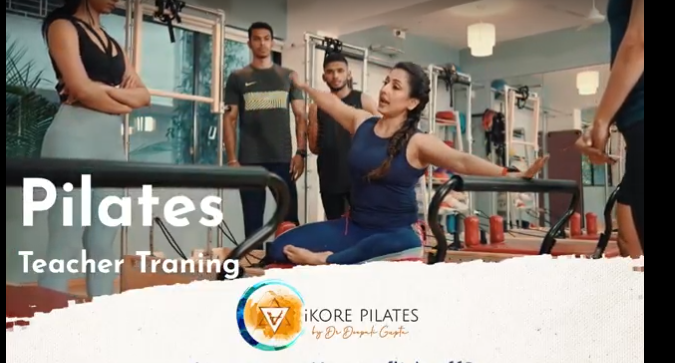In today’s fast-paced world, finding a fitness routine that not only strengthens the body but also calms the mind is a rare gem. Pilates has emerged as one such holistic practice, offering a harmonious blend of physical strength, flexibility, and mental focus. Whether you’re a beginner looking to improve posture or an athlete seeking better core stability, Pilates has something for everyone.
What Is Pilates?
Pilates is a low-impact exercise system developed in the early 20th century. It focuses on controlled movements, precise form, and conscious breathing. The method emphasizes the connection between mind and body, encouraging practitioners to perform each movement with intention and awareness. Unlike high-intensity workouts that can be hard on the joints, Pilates promotes fluidity and alignment, making it suitable for people of all ages and fitness levels.
Core Principles of Pilates
Understanding the core principles of Pilates helps to appreciate the depth of the practice. These principles include:
- Concentration – Being fully present during the workout.
- Control – Ensuring every movement is deliberate and guided.
- Centering – Engaging the body’s core, also referred to as the “powerhouse.”
- Flow – Creating seamless transitions between movements.
- Precision – Focusing on the accuracy of form and technique.
- Breath – Coordinating breathing with movement to energize the body and calm the mind.
These principles make Pilates more than just a physical routine—it becomes a mindful experience.
Benefits of Practicing Pilates
1. Improved Core Strength
One of the most recognized benefits of Pilates is enhanced core strength. The core muscles, including the abdominals, lower back, hips, and pelvic floor, are engaged throughout the exercises. A strong core improves balance, stability, and posture, and reduces the risk of injury.
2. Enhanced Flexibility
Pilates stretches and strengthens muscles simultaneously. This dual action increases flexibility while promoting joint mobility. Over time, this leads to a greater range of motion and better coordination.
3. Better Posture and Alignment
Many people suffer from poor posture due to prolonged sitting and screen time. Pilates corrects imbalances and encourages proper spinal alignment, resulting in better posture. It teaches body awareness, making it easier to maintain good posture in everyday life.
4. Injury Prevention and Rehabilitation
Pilates is commonly recommended by physical therapists because of its gentle yet effective nature. It helps in injury prevention by strengthening muscles and improving alignment. For those recovering from injuries, it offers a safe way to regain strength and mobility.
5. Mind-Body Connection
Each movement in Pilates requires mental focus. Practitioners learn to become more in tune with their bodies, which enhances self-awareness and mindfulness. This focus can have a calming effect and reduce stress.
6. Boosted Energy and Stamina
Although it’s low-impact, Pilates challenges the body in unique ways. It boosts circulation, oxygenates the body, and builds stamina without the strain of high-impact workouts.
Types of Pilates Exercises
There are two main types of Pilates:
- Mat Pilates: Performed on a mat using body weight as resistance. This form is accessible and can be done at home or in a class setting.
- Equipment-based Pilates: Uses machines like the Reformer, Cadillac, and Wunda Chair. These add resistance and support, allowing for a wide range of motion and deeper engagement.
Both forms follow the same core principles, and each offers unique benefits depending on your goals.
Popular Pilates Movements for Beginners
If you’re new to Pilates, starting with foundational movements helps build a strong base. Here are a few classic exercises:
1. The Hundred
This is a breathing exercise that also activates the core. Lying on your back, lift your legs and head off the mat, and pump your arms up and down while inhaling and exhaling in short bursts.
2. Roll-Up
This move strengthens the abdominals and stretches the spine. Lie flat and slowly roll up into a seated position, then roll back down one vertebra at a time.
3. Single Leg Stretch
Lying on your back, bring one knee into the chest and extend the other leg. Switch legs in a controlled, rhythmic manner while maintaining core engagement.
4. Double Leg Stretch
This variation of the single leg stretch targets deeper abdominal muscles. Extend both legs and arms outward simultaneously, then circle your arms and draw your knees back in.
5. Plank or Leg Pull Front
A full-body move that strengthens the core, arms, and shoulders. Maintain a strong line from head to heels, focusing on form and breath.
How to Start Practicing Pilates
- Join a Class: Starting with a certified instructor helps ensure correct technique and form.
- Use Online Resources: Many reputable platforms offer beginner-friendly tutorials for home practice.
- Invest in Equipment: A good-quality mat and optional props like resistance bands, balls, or rings can enhance your workout.
- Start Slow: Focus on mastering the basics before progressing to advanced moves.
- Be Consistent: Like any fitness regime, regular practice leads to better results. Aim for 2-3 sessions per week.
Who Can Benefit from Pilates?
Pilates is incredibly versatile and inclusive. It’s suitable for:
- Older Adults: Helps maintain balance and joint mobility.
- Athletes: Enhances performance through core stability and flexibility.
- Pregnant Women: Many prenatal Pilates routines support body changes during pregnancy.
- Office Workers: Improves posture and reduces back pain from prolonged sitting.
- People with Chronic Pain: Gentle movements can relieve conditions like lower back pain or arthritis.
Common Myths About Pilates
Despite its popularity, some myths still surround Pilates:
- “It’s only for women”: Pilates benefits everyone, regardless of gender.
- “It’s too easy”: While gentle, Pilates can be highly challenging, especially as you progress.
- “It’s just stretching”: Pilates involves strength training, coordination, and endurance, not just flexibility.
Conclusion
Pilates offers a complete approach to fitness that nurtures the body and mind. From improving core strength and flexibility to enhancing posture and mental clarity, it stands out as a sustainable, rewarding workout. Whether practiced on a mat or using equipment, advanced Pilates workouts can empower individuals to lead healthier, more balanced lives. With consistency, mindfulness, and a focus on form, anyone can harness the benefits of this transformative discipline.



